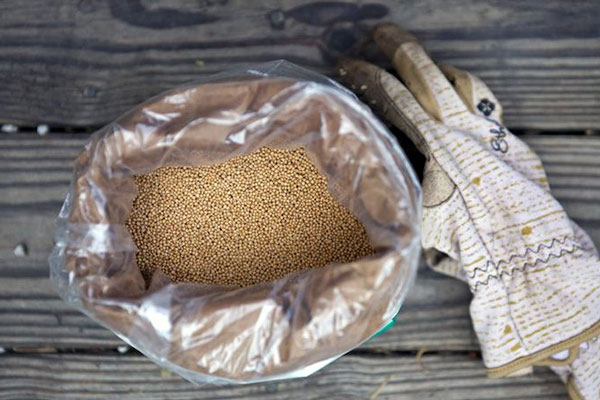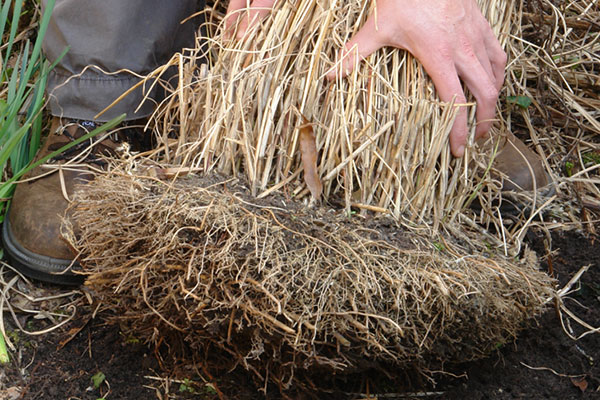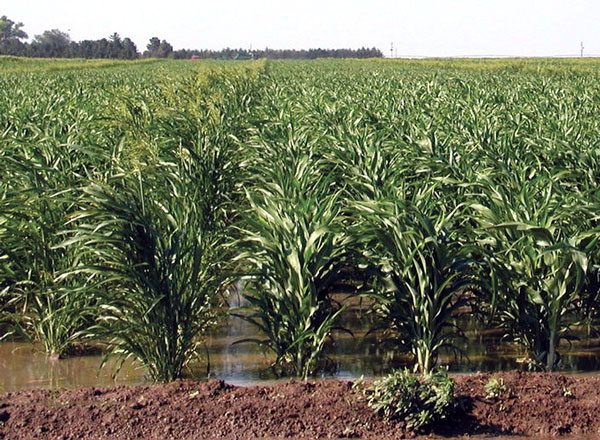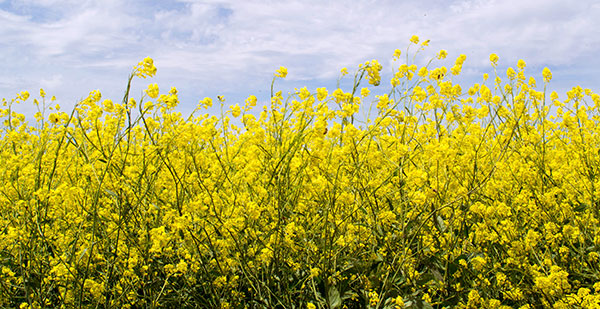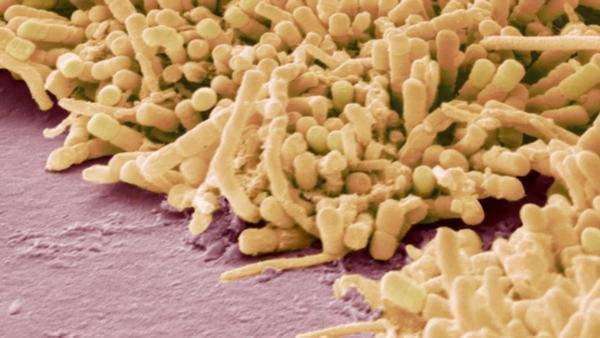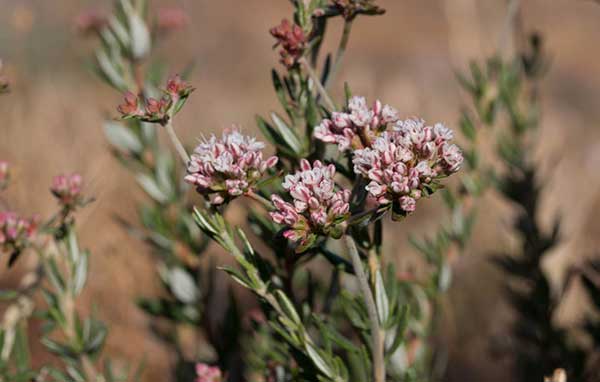In the previous article, I discussed several methods of growing green manures but didn’t address how to sow, when to sow, and when to harvest them. Here, I fill that gap.
How to Sow Green Manures
The best part of sowing green manures is the ease with which it can be done. No special soil preparation, hole digging, or turning is required (though it’s optional). The ideal method is to sow immediately after harvesting, on loose, moist soil. A significant advantage of green manures is that most can be sown even into mowed grass, simply by walking over it with a fork and watering after sowing. This method works well for white mustard, a favorite among beginner farmers, and rye, with its robust root system.
For manual sowing, follow these steps:
- Determine the amount of seed needed per hundred square meters for your chosen green manure (refer to the table below).
- Calculate the weight of seeds needed for the sowing area.
- Divide the seeds into two parts. If the seeds are small, mix them with sand.
- Clear the area of weeds and rake it.
- Spread one half of the seeds over the area, then distribute the second half perpendicularly.
- Avoid economizing on seed material, as insufficient sowing can lead to unfulfilled tasks and wasted effort, time, and money. Follow recommendations closely.
- Larger seeds are better sown in furrows made with a hoe or weeder.
Another important detail that is rarely mentioned is that green manures need mineral fertilizers. Adding minerals to green manures is quite reasonable because the nutrients they accumulate will return to the soil in organic form, which bacteria will process and return to the fruiting crops in a “proper” form.
When to Sow Green Manures
There are four main options for sowing green manures. The timing depends on several factors: your preferences, the season, the type of plant, the crop that will follow, and other considerations.
 Source: Managing Cover Crops Profitably
Source: Managing Cover Crops Profitably
Autumn Sowing of Winter Green Manures
General rule: Considering climatic conditions, winter green manures can be sown between September 15 and November 1.
At the end of the season, after the last harvest, sow winter green manures like rye or wheat. These crops will protect the soil from erosion throughout the winter and retain maximum moisture. Two to three weeks before planting early fruit crops, the green manure should be mowed and incorporated to enrich the soil with nitrogen and feed beneficial microorganisms and worms.
Another reason for the “two-week break” is the allelopathic effect of plants on each other. This property among green manure plants is rarely studied. Farmers discover it empirically. Bublik’s “Melange Garden” has a whole section on this, but no documented confirmation. Often, negative effects of root exudates from rye, oats, sorghum, and sudangrass on fruit crops are reported if the minimum decomposition period is not observed.
Many complain about the too powerful root system of cereals, especially rye. Despite its advantages, this can be problematic in manual soil processing if it grows too densely. Some farmers sow cereals right after harvesting early crops like onions, garlic, or cabbage, and incorporate them late in the fall.
Sowing Non-Winter Green Manures “Before Winter” for Early Spring Germination
In the first frosts, sow almost everything for early spring germination (success is not always guaranteed due to many factors affecting the autumn-winter season). The best winter green manures are oats, rape, vetch-oat mixture, canola, soybeans, and mustard. Sow them into pre-raked soil during the first frosts to avoid germination during short thaws and mouse infestation.
Crop Rotation with Short-Vegetation Green Manures from Early Spring to October
A plan might look like this: After snow melts, sow fast-growing green manures like phacelia, white mustard, oilseed radish, or sweet clover in warm soil. Choose plants with a 35-40 day growing period. After incorporating the green manures into the soil, wait about 2-3 weeks before planting fruit crops. After harvesting early crops, sow green manure again. This cycle can be repeated as weather and sowing plans allow.
Sowing Perennial Green Manures
Perennial green manures are planted with a long-term goal of forming a fertile soil layer over several years without further processing. Detailed terraforming with green manures is described in the first article in the series.
 Field of perennial lupine in Switzerland.
Field of perennial lupine in Switzerland.
Incorporation of perennial green manures should be done a season before planting fruit crops. It’s advisable to remove perennials no earlier than two years of their growth and no later than five. While the soil is under green manure, overly vigorous plants should be mowed, but not to the root. It makes sense to remove flower stalks to prevent the green manure from becoming an uncontrollable weed. The mowed green mass can be left as mulch or, more beneficially, composted, with the compost used on the same bed during fruit planting season. This excess green mass can also be used to mulch cultural crops and between rows on neighboring beds.
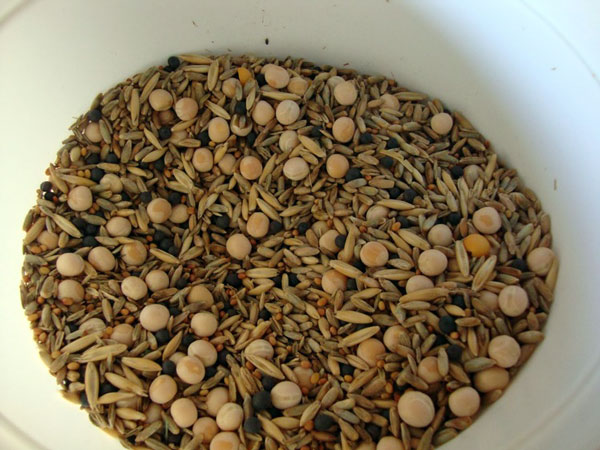 Mix of legumes and cereal green manures.
Mix of legumes and cereal green manures.
You can combine green manure options in different areas, experimenting with mixes of legumes, legume herbs, and diverse herbs. Ready-made mixes are available, including classic compositions like vetch-oat mixtures, mustard-oilseed radish, and winter cereals.
To Incorporate or Not?
There is an opinion that incorporating green manures is not necessary, as everything will decompose eventually. Indeed, green manure left unincorporated over winter will decompose, losing all nitrogen as ammonia to the atmosphere, and worms won’t rise to the frozen top layer, which is a downside. While humus accumulation will be more productive, as K.I. Dovban writes, nutrients will mineralize and return to fruit crops the next season, affecting the current harvest.
Surveys of gardeners in non-chernozem areas who have experimented with this show a consensus: unincorporated green manures do not maintain humus levels, have little effect on soil structure, and are a waste of money.
Incorporation of green manures in crop rotation is necessary, at least partially. With very good green mass, part can be used for compost and part for mulch. My parents’ example, who first tried green manuring with white mustard: after harvesting garlic, they sowed it, and as the flower stalks emerged, my mother added them to salads. They divided the rich green mass into three parts: one part was buried (10 cm deep), one went into compost, and one under the harvested early tomatoes. They are very pleased with the darkened clay soil, which hadn’t been improved for at least ten years.
Another question is whether to incorporate immediately or let it dry. Incorporating freshly mowed green manure stimulates rapid decomposition and nutrient availability for fruit crops, with minimal nitrogen loss. Allowing the green manure to wilt before incorporation will result in slower decomposition, using soil nitrogen (straw depletes the soil), but more intensive humus accumulation (organic-mineral formation in the process of microbial digestion for subsequent feeding of crops).
Both options benefit different soils depending on needs.
Incorporation of Winter Green Manures
Now specifically about incorporation. I’ll start with winter green manures. Timing for cutting winter green manures affects soil temperature, moisture, nutrient turnover, and chemical changes during decomposition. So, approach cutting and incorporation based on the situation.
Advantages and disadvantages of early harvest of winter green manures:
- More time for replenishing soil moisture (winter cereals dry out, which can be beneficial in some regions).
- Soil warms up faster, partly due to decomposition of green mass.
- Reduces phytotoxic effects from decomposition products on subsequent crops.
- Decreases survival of pathogens.
- Increases nitrogen mineralization.
- More opportunities for weeds to establish.
Advantages of later harvest of winter green manures:
- Fewer chances for weeds.
- Live mulching.
- Later incorporation of legume green manures adds more nitrogen to the soil.
Winter cereals should be removed no later than two weeks before planting main crops. This recommendation is common, but carbon-rich cereals decompose slowly. Waiting periods can be 4-8 weeks. Therefore, composting should not be ruled out. Let the roots decompose while the green biomass works through compost and partial mulching of crops.
Green manures can be incorporated using any available method - mower, we
eder, motoblock, cultivator… Some believe that mowed green manures should be left unincorporated on the surface, mimicking natural meadows with wild grasses. While mulch is beneficial, all nitrogen will be lost, and humus depleted. If physically unable to incorporate the green mass, use most of it for compost or make “green teas” - liquid fertilizers. For high-yielding crops like tomatoes, large cabbages, and productive potatoes, natural farming resources are insufficient. In our conditions, incorporation of green manures is essential, or large amounts of manure and compost are needed.
Incorporating green manures with a short growing period in crop rotation should be done before or during flowering when the plant has accumulated mass and moisture. Avoid the appearance of tubes, spikes, or seeding - the plant will use nutrients for reproduction, and stems become tough. Green manure can easily become a weed.
In future articles, I will cover green manure plants by type: legumes , cruciferous and cereal .
